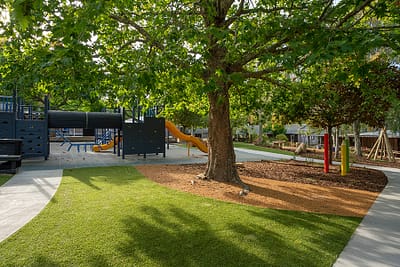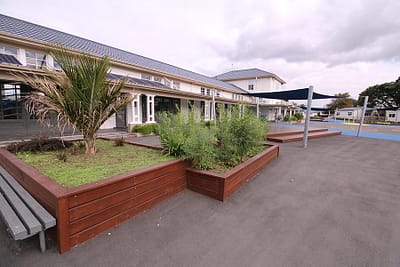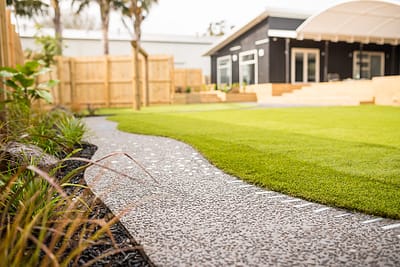We are all aware of the importance of teaching children about planting, harvesting, and eating their own fruits and vegetables.
Many schools have vegetable gardens and orchards for this very reason. But what about other plants? Do children benefit from the planting of shrubs, trees, and flowering plants? We believe they do. Which means we try to incorporate planting wherever possible or practical.
The thing about children and plants is that they are a tricky combination. Children love nothing more than jumping in and out of bushes and climbing trees, which takes a toll on those plants. But if balanced and placed correctly, planting provides an almost limitless supply of fun and benefits to children and the playspace in general.
When considering plants for your playspace, it’s important to try to provide a range of forms, textures and colours. Plants also need to be safe, so anything that poses a poisoning or choking risk is off the list, obviously.
Check out our 25 ways to activate underutilised space in your school
There are several types of planting groups that we look to include within a space:

Trees:
Trees are so important to providing scale within a space. They soften the feel of a space and may provide habitat for wildlife. They may provide tree climbing and in maturity they are valued for their natural shade.
There are two types of trees: Evergreen and Deciduous. Deciduous trees drop their leaves once a year and this can provide a great teaching opportunity, as well as providing a new play material. In the wrong place, however, this mass leaf fall can cause maintenance issues.
As the name suggests, Evergreen trees keep their greenery all year round. They are often the preferred choice for schools as they don’t have an annual leaf drop. Interestingly, Evergreens lose just as many leaves as Deciduous trees do, however, they do it gradually, over time. This is a fact that many people overlook which is a mistake as Evergreens will require just as much maintenance as Deciduous trees, just spread out over the course of the year.
Tree size is very important in play spaces. As with residential properties, available space for trees is getting harder to find and everyone wants a small tree. However, most trees in catalogues are given at a ten-year mature height and can often grow more than predicted. A good estimate for the smallest tree is to allow at least 5m for its eventual growth.

Hardy:
A playspace is a hard place for a plant. Constantly getting picked at, pulled, and trampled on. Plants chosen for high use areas need to be hardy, not only against children’s physical wear and tear, but sometimes from rabbits, chickens and from well-meaning over watering or sand travel.
Soft stem plants that snap are never a good choice. We look for plants that have a bit of spring in them to handle bumps and knocks.
Schools close during Holiday periods and it is often hard to find someone to water the plants at these times. We look for plants that fend for themselves naturally, as well as plants that may be self-spreading or are good for keeping weed growth down.

Native:
Some schools may wish to have only native plants or native areas in their playspace. Having proven themselves in the local climate, natives are generally hardier than most plants. Roanga Gardens for Maori healing and teaching or Flax Gardens for weaving can also be achieved.

Sensory:
Sensory areas are important for children to allow their smell, touch and visual senses to be engaged. Plants are chosen that can be picked and used in play, such as flowers or herbs used to make a smelly potion. These plants usually also encourage wildlife into the play space. Sensory planting areas are often a quiet, calm, contemplative space, that are important to include in any busy play area.

Edible:
As outdoor areas are often limited on space, we want to get the most from our plants that we can. Planting edibles is a great way to do this. They enable multipurpose use of space, while providing all the softening and calming attributes of a planted area, and they give back edible offerings. Edibles come in a wide range of options from trees and shrubs which are generally permanent as opposed to vegetable gardens that need re-growing. They are great resources for teaching and cooking and can extend the learning of many children that don’t have productive gardens at home.
With creativity happening at a far earlier stage of the playground process the entire space can be expanded to cover both play and learning experiences.
Discover how to deliver play and plan for a successful school future – check out our 25 ways to activate underutilised space in your school.
